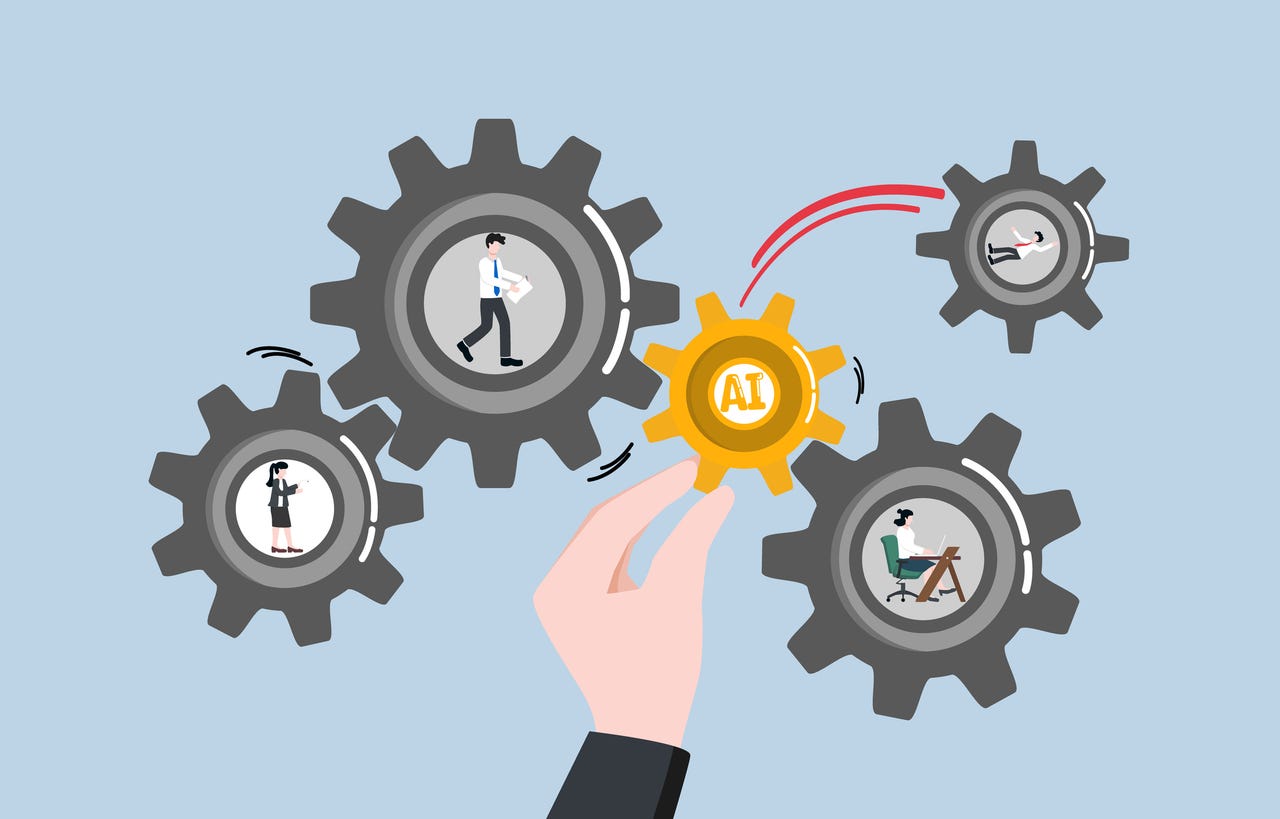MIT Physicists Transform Pencil Lead Into Electronic “Gold”

MIT physicists have metaphorically turned graphite, or pencil lead, into gold by
isolating five ultrathin flakes stacked in a specific order. The resulting
material can then be tuned to exhibit three important properties never before
seen in natural graphite. ... “We found that the material could be
insulating, magnetic, or topological,” Ju says. The latter is somewhat related
to both conductors and insulators. Essentially, Ju explains, a topological
material allows the unimpeded movement of electrons around the edges of a
material, but not through the middle. The electrons are traveling in one
direction along a “highway” at the edge of the material separated by a median
that makes up the center of the material. So the edge of a topological material
is a perfect conductor, while the center is an insulator. “Our work
establishes rhombohedral stacked multilayer graphene as a highly tunable
platform to study these new possibilities of strongly correlated and topological
physics,” Ju and his coauthors conclude in Nature Nanotechnology
Conscientious Computing – Facing into Big Tech Challenges

The tech industry has driven incredibly rapid innovation by taking advantage of
increasingly cheap and more powerful computing – but at what unintended cost?
What collateral damage has been created in our era of “move fast and break
things”? Sadly, it’s now becoming apparent we have overlooked the broader
impacts of our technological solutions. As software proliferates through every
facet of life and the scale of it increases, we need to think more about where
this leads us from people, planet and financial perspectives. ... The classic
Scope, Cost, Time pyramid – but often it’s the **observable ** functional
quality that is prioritised. For that I’ll use a somewhat surreal version of an
iceberg – as so much of technical (and effectively sustainability debt – a topic
for a future blog) is hidden below the water line. Every engineering decision
(or indecision) has ethical and sustainability consequences, often invisible
from within our isolated bubbles. Just as the industry has had to raise its game
on topics such as security, privacy and compliance, we desperately need to raise
our game holistically on sustainability.
The CIO’s fatal flaw: Too much leadership, not enough management

So why does leadership get all the buzz? A cynic might suggest that the more
respect doing-the-work gets, the more the company might have to pay the people
who do that work, which in turn would mean those who manage the work would get
paid more than those who think and charismatically express deep and
inspirational thoughts. And as there are more people who do work than those who
manage it, respecting the work and those who do it would be expensive. Don’t
misunderstand. Done properly, leading is a lot of work, and because leading is
about people, not processes or tools and technology; it’s time consuming, too.
And in fact, when I conduct leadership seminars, the biggest barrier to success
for most participants is figuring out and committing to their time budget.
Leadership, that is, involves setting direction, making or facilitating
decisions, staffing, delegating, motivating, overseeing team dynamics,
engineering the business culture, and communicating. Leaders who are committed
to improving at their trade must figure out how much time they plan to devote to
each of these eight tasks, which is hard enough.
The Next IT Challenge Is All about Speed and Self-Service

One of the most significant roadblocks to rapid cloud adoption is sheer
complexity. Provisioning a cloud environment involves dozens of dependent
services, intricate configurations, security policies and data governance
issues. The cognitive load on IT teams is significant, and the situation is
exacerbated by manual processes that are still in place. The vast majority of
engineering teams still depend on legacy ticketing systems to request IT for
cloud environments, which adds a significant load on IT and also slows
engineering teams. This slows down the entire operation, making it difficult for
IT and engineering to support business needs effectively. In fact, in one study
conducted by Rafay Systems, application developers at enterprises revealed that
25% of organizations reportedly take three months or longer to deploy a modern
application or service after its code is complete. The real goal for any IT
department is to support the needs of the business. Today, they do that better,
faster and more cost-effectively by leveraging cloud technologies to realize all
the business benefits of the modern applications being deployed.
The DPDP Act: Bolstering data protection & privacy, making India future-ready

The DPDP Act has a direct impact across industries. Organisations not only
need to reassess their existing compliance status and gear up to cope with the
new norms but also create a phased action plan for various processes.
Moreover, if labeled as SDF, organisations also need to appoint a Data
Protection Officer (DPO). In addition, organisations need to devise
appropriate data protection and privacy policy framework in alignment with the
DPDP Act. Further, consent forms and mechanisms have to be developed to ensure
standard procedures as laid out in the legislation. Companies have to
additionally invest to adopt the necessary changes in compliance with the law.
They need to list down their third-party data handlers, consent types and
processes, privacy notices, contract clauses, categorise data, and develop
breach management processes. Sharing his perspective on the DPDP Act, Amit
Jaju, Senior Managing Director, Ankura Consulting Group (India) says, “The
Digital Personal Data Protection Act 2023 has ushered in a new era of data
privacy and protection, compelling solution providers to realign their
business strategies with its mandates.
Will AI hurt or help workers? It's complicated

Here's what is certain: CIOs see AI as being useful, but not replacing
higher-level workers. JetRockets recently surveyed US CIOs. In its report, How
Generative AI is Impacting IT Leaders & Organizations, the custom-software
firm found that CIOs are primarily using AI for cybersecurity and threat
detection (81%), with predictive maintenance and equipment monitoring (69%)
and software development / product development (68%) in second and third
place, respectively. Security, you ask? Yes, security. CrowdStrike, a security
company, sees a huge demand building for AI-based security virtual assistants.
A Gartner study on virtual assistants predicted, "By 2024, 40% of advanced
virtual assistants will be industry-domain-specific; by 2025, advanced virtual
assistants will provide advisory and intervention roles for 30% of knowledge
workers, up from 5% in 2021." By CrowdStrike's reckoning, AI will "help
organizations scale their cybersecurity workforce by three times and reduce
operating costs by close to half a million dollars." That's serious cash.
From Chaos to Confidence: The Indispensable Role of Security Architecture
Beyond mere firefighting, security architecture embraces the proactive art of
strategic defense. It takes a risk-based approach to identifying potential
threats, assessing weak points in an organization's IT stack, architecting
forward-looking designs and prioritizing security initiatives. By aligning
security investments with the organization's risk tolerance and business
priorities, security architecture ensures that precious resources are
optimally allocated for maximum security defense designed with in-depth zero
trust security principles in mind. This reduces enterprise application
deployment and operational security costs. It is similar to designing
high-rise buildings in a standard manner, following all safety codes and
by-laws while still allowing individual apartment owners to design and create
their homes as they would prefer. Cyberattacks have become increasingly
sophisticated and frequent. As a result, it is imperative for defense systems
to have comprehensive, purpose-built architectures and designs in place to
protect against such threats. Security architecture provides a complete
defense framework by integrating various security components
Top 5 IT disaster scenarios DR teams must test

Failed backups are some of the most frequent IT disasters. Businesses can
replace hardware and software, but if the data and all backups are gone,
bringing them back might be impossible or incredibly expensive. Sys admins
must periodically test their ability to restore from backups to ensure
backups are working correctly and the restore process does not have some
unseen fatal flaw. At the same time, there should always be multiple
generations of backups, with some of those backup sets off site. ...
Hardware failure can take many forms, including a system not using RAID, a
single disk loss taking down a whole system, faulty network switches and
power supply failures. Most hardware-based IT disaster scenarios can be
mitigated with relative ease, but at the cost of added complexity and a
price tag. One example is a database server. Such a server can be turned
into a database cluster with highly available storage and networking. The
cost for doing this would easily double the cost of a single nonredundant
server. Administrators would also have to undergo training to manage such an
environment.
Mastering AI Quality: Strategies for CDOs and Tech Leaders

Most chief data officers (CDOs) work hard to make their data operations into
“glass boxes” --transparent, explainable, explorable, trustworthy resources
for their companies. Then comes artificial intelligence and machine learning
(AI/ML), with their allure of using that data for ever-more impressive
strategic leaps, efficiencies, and growth potential. However, there’s a
problem. Nearly all AI/ML tools are “black boxes.” They are so inscrutable
even their creators are concerned about how they produce their results. The
speed and depth at which these tools can process data without human
intervention or input presents a danger to technology leaders seeking
control of their data and who want to ensure and verify the quality of
analytics that use it. Combine this with a push to remove humans from the
decision loop and you have a potent recipe for decisions to go off the
rails. ... With a human collaborator or a human-designed algorithm, it is
generally easy to elicit a meaningful response to the question, “Why is this
result what it is?” With AI -- and generative AI in particular -- that may
not be the case.
Revamping IT for AI System Support

“It’s important for everybody to understand how fast this [AI] is going to
change,” said Eric Schmidt, former CEO and chairman of Google. “The
negatives are quite profound.” Among the concerns is that AI firms still had
“no solutions for issues around algorithmic bias or attribution, or for
copyright disputes now in litigation over the use of writing, books, images,
film, and artworks in AI model training. Many other as yet unforeseen legal,
ethical, and cultural questions are expected to arise across all kinds of
military, medical, educational, and manufacturing uses.” The challenge for
companies and for IT is that the law always lags technology. There will be
few hard and fast rules for AI as it advances relentlessly. So, AI runs the
risk of running off ethical and legal guardrails. In this environment, legal
cases are likely to arise that define case law and how AI issues will be
addressed. The danger for IT and companies is that they don’t want to be
become the defining cases for the law by getting sued. CIOs can take action
by raising awareness of AI as a corporate risk management concern to their
boards and CEOs.
Quote for the day:
"Holding on to the unchangeable past
is a waste of energy and serves no purpose in creating a better future."
-- Unknown
No comments:
Post a Comment